
The Iberian lynx is one of the four extant species within Lynx, a genus of medium-sized wild cats. The Iberian lynx is endemic to the Iberian Peninsula in southwestern Europe. It is listed as vulnerable on the IUCN Red List. In the 20th century, the Iberian lynx population had declined because of overhunting, poaching, fragmentation of suitable habitats, and the population decline of its main prey species, the European rabbit, caused by myxomatosis and rabbit haemorrhagic disease. Fossils suggest the species has been present in Iberia since the end of the Early Pleistocene, around one million years ago.
The Iberian language was the language of an indigenous western European people identified by Greek and Roman sources who lived in the eastern and southeastern regions of the Iberian Peninsula in the pre-Migration Era. An ancient Iberian culture can be identified as existing between the 7th and 1st centuries BC, at least.

Jamón is a type of dry-cured ham produced in Spain. It is one of the most globally recognized food items of Spanish cuisine. It is also regularly a component of tapas.

Jamón ibérico, known in Portuguese as presunto ibérico, is a variety of jamón or presunto, a type of cured leg of pork produced in Spain and Portugal, in the Iberian Peninsula. It is considered a staple of both Portuguese cuisine and Spanish cuisine.
Saliega was an Iberian lynx who in 2005 became the first of her species to give birth in captivity.
Cross-fostering is a technique used in animal husbandry, animal science, genetic and nature versus nurture studies, and conservation, whereby offspring are removed from their biological parents at birth and raised by surrogates, typically of a different species, hence 'cross.' This can also occasionally occur in nature.

The Iberian wolf, is a subspecies of grey wolf. It inhabits the northwest of the Iberian Peninsula, which includes northwestern Spain and northern Portugal. It is home to 2,200-2,700 wolves which have been isolated from mixing with other wolf populations for over a century. They form the largest wolf population in Western Europe.

Torrelodones is a municipality in the northwest of the Autonomous Community of Madrid, Spain. It is situated 29 kilometers northwest from the city of Madrid. Because of its location between the Sierra de Guadarrama and the metropolitan area of the capital, it is linked to two districts in Madrid: the agricultural area of Guadarrama and the metropolitan area of Madrid.
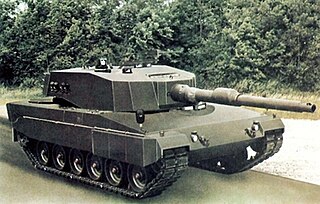
The Lince was a Spanish development programme for a proposed main battle tank that unfolded during the late 1980s and early 1990s. The intention was to replace the M47 and M48 Patton tanks that the Spanish Army had received under the U.S. Mutual Defense Assistance Act between 1954 and 1975, and to complement the AMX-30E tanks manufactured for the army during the 1970s. Companies from several nations, such as German Krauss-Maffei, Spanish Santa Bárbara, and French GIAT, made bids for the development contract. The main priorities were mobility and firepower, with secondary priority placed on protection; the Lince tank was to have been lighter and faster than its competitors. To achieve a sufficient level of firepower and protection, the Lince was to use Rheinmetall's 120 mm L/44 tank-gun and German composite armour from the Leopard 2A4.
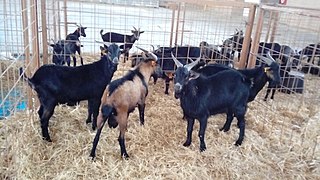
The Verata is a traditional Spanish breed of domestic goat. It is a dual-purpose breed, reared both for its meat and for its milk. It is named for, and is thought to originate in, the comarca of La Vera, in the province of Cáceres, in the northern part of the autonomous community of Extremadura in western central Spain. It is one of two traditional goat breeds in Extremadura, the other being the Retinta Extremeña.
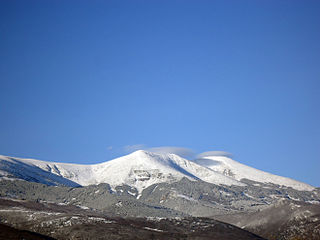
The Iberian System is one of the major systems of mountain ranges in Spain. It consists of a vast and complex area of mostly relatively high and rugged mountain chains and massifs located in the central region of the Iberian Peninsula, but reaching almost the Mediterranean coast in the Valencian Community in the east.
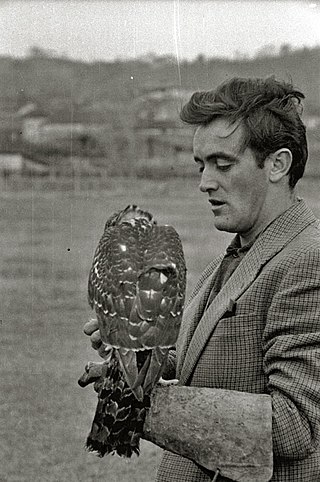
Félix Samuel Rodríguez de la Fuente was a Spanish naturalist and broadcaster. He is best known for the highly successful and influential TV series, El Hombre y la Tierra (1974–1980). A graduate in medicine and self-taught in biology, he was a multifaceted charismatic figure whose influence has endured despite the passing years.
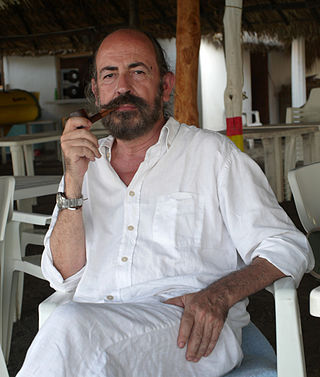
Joaquim Veà Baró was a Catalan primatologist.
Andoni Canela Urizar is a Spanish photographer who specializes in nature and environment photography.
Catia Faria is a Portuguese moral philosopher and activist for animal rights and feminism. She is assistant professor in Applied Ethics at the Complutense University of Madrid, and is a board member of the UPF-Centre for Animal Ethics. Faria specialises in normative and applied ethics, especially focusing on how they apply to the moral consideration of non-human animals. In 2022, she published her first book, Animal Ethics in the Wild: Wild Animal Suffering and Intervention in Nature.

The Spanish gold lynx or Spanish doubloon is a gold bullion coin issued by the Kingdom of Spain, minted for the first time in 2021 for the Spanish Royal Mint. Its grade is pure gold 999.9 according to Provision 14038 of BOE no. 198 of 2021. The quality of its minting is Proof Reverse, for which the motifs have a mirror shine while the background is matte.
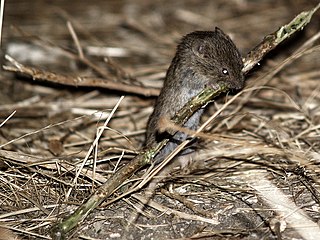
The 2007 vole plague began in early summer 2006 in the province of Palencia, in the Spanish autonomous community of Castile and León. In the summer of 2007, crops in the plateau fields were devastated by rodents. In September 2007, after a summer of severe losses, the density of rodents decreased throughout the community and the plague was institutionally considered to be over. However, there was an abundance of voles during the following months. Only the winter frosts and the low temperatures of November and December reduced vole numbers to normal.
Fostering, in falconry and reintroduction of birds, is a method of breeding birds for their introduction into the wild that consists of placing chicks in the nest of a couple that has others of a similar age and size. Sometimes it can also be used when the chicks have already left the nest but continue to be fed by their parents.

Puppet-rearing is a method of breeding birds in captivity for their reintroduction into the wild that consists of feeding chicks with puppets that simulate adults of their species to avoid direct contact with humans.
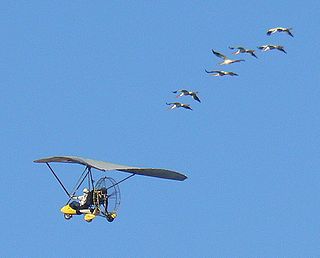
Human-guided migration or human-led migration is a method of restoring migratory routes of birds bred by humans for their reintroduction into the wild.















